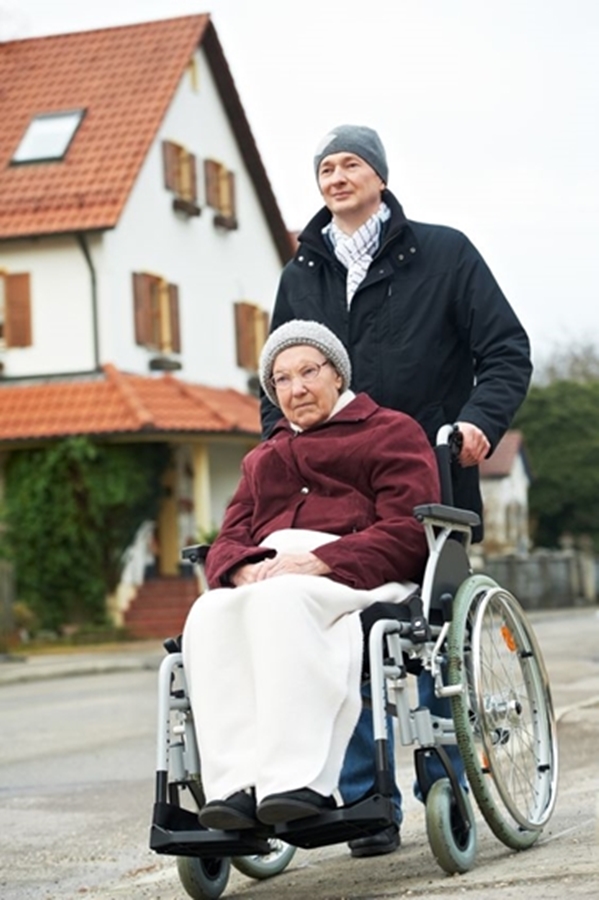I have never been one to find it easy to say “no.” I’m a people pleaser, I guess, but I find delight in making others happy, and I enjoy helping people. However, I guess for my own sake, and, maybe sometimes even for theirs, I should learn to say ‘no,’ but how do you know when it’s the right time to do that? Here are some examples of times I’ve found it hard to say ‘no’ to Lynn.
When Lynn got his “back pay” from Social Security.
As is true for everyone, it took us a long time to get social security benefits. We had to wait until we could go before a judge who could see for himself that Lynn was totally disabled. So when he got his check, it was rather sizable. At that time, he had not been in a wheelchair very long and still had good use of both arms. Lynn loves to surf fish and he was looking ahead to vacation. He wanted a way to still be able to surf fish and wondered if there was such a thing as a 4-wheel drive wheelchair. He did some research and found just what he was looking for…in South Africa. It could go over sand, climb steps, elevate his seat so he could look over things, had headlights, a horn, ahh…it was cool. It gave him hope that he could continue to do what he enjoyed most in life for leisure time–fish. But it was VERY expensive! It would wipe out all the back pay if he bought it. He really wanted it. To him, it was a symbol that his disability would not wipe out his ability to have fun. It represented freedom and gave him the feeling of being in control and outsmarting MS. However, he felt guilty about using all that money for a toy. He looked to me for permission to buy it. What did I say? “Yes,” of course. How could I take away his hope? It was, after all, his money and not money we had already been counting on to pay bills (though secretly, I had several credit cards I wanted to pay off that I had run up with costs associated with his care). But the main reason was I just could not take away his hope.
Was that the right decision? Yes, for his mental health; no, for our finances. To this day, that machine has not worked. We took it on one vacation, and it would not move in the sand. We sent the motor back to South Africa in March of this year and have yet to get it back. Right now it’s a huge obstacle in my living room that has no motor and cannot function at all. Had I known this, I would have said ‘no,’ but not knowing this, his hope was more important than the cost. Therefore, I still think it was the right decision because having hope when you are disabled is essential to life.
Purchasing a New Lift Device
Once again, I’m faced with whether to say ‘no’ or participate in hope and once again, I’m going with hope. Lynn wants very much to stand and, if possible, to walk again. Who wouldn’t want that? He’s convinced that if he works his muscles well enough, he will be able to do so and that it is not the MS that has caused him not to be able to stand but the deconditioning he experienced when he was hospitalized two years ago for so long. The doctors can’t say for sure, though they believe that the progression of his MS is the reason for his immobility. However, with the change in his diet to following the Terry Wahl MS diet and his dedication to exercise, he truly is moving more than he has in years. Who’s to say that he could not eventually stand if he was able to recondition all the necessary muscles?
The problem with reconditioning muscles necessary for standing is that there are so many of them. Doing exercises to isolate one muscle group at a time requires considerably more energy than he has available. Therefore, once again, he has done his research and identified a device that will help him stand with assistance. It’s called a Rifton TRAM. It allows the caregiver to put a saddle under the hips of the patient and gradually lift them to a standing position. With the saddle in place, they have support in the amount needed to bear weight. The advantage of this is that by bearing weight, he can activate more muscle groups plus the stress on the bones, making the bones stronger. Osteoporosis sets in when there is no stress on the bone, and that causes bone deterioration, which makes the person more susceptible to fractures. So, by using the TRAM, not only could he strengthen muscles to stand on his own, but he could help prevent future bone fractures.
We are in the process now of getting the information necessary for the insurance company. However, even if they do not approve of it, he still wants to buy it because he’s convinced of what he can achieve with it…and who am I to say he can’t?
What’s going through my head though? Will he be crushed if he cannot stand and go into a deep depression? Can we afford to pay the full price at a time when year-end bills are coming? His son’s wedding is in four weeks and we have to prepare and pay for the rehearsal dinner as well as Lynn’s clothing and get their wedding present. Christmas is coming which means presents. And, of course, there are multiple bills that need to be paid. Knowledge of all this produces a lot of stress as I agree to buy the TRAM even if the insurance won’t pay.
I really want it to work for him, but I keep remembering that behemoth wheelchair in my living room. I don’t want another useless device in my house, so agreeing to this takes a lot of faith on my part. I know, however, that God will take us through whatever lies ahead. If it doesn’t work, He will help us both deal with that. If it does work, then He will be gloried in helping us get the device through faith.
So, once again, I just say, “Yes.”



